- Home >
- Education Center >
- Welding of Medium/High Carbon Steels and Special Steels >
- Welding of Medium/High Carbon Steels and Special Steels >
Welding of Medium/High Carbon Steels and Special Steels
3. Considerations about dissimilar metal joints
A typical case of this is welding of medium/high carbon steel with plain carbon steel like SS400 (ASTM A36).
This is a combination of extremely crack−sensitive high−strength steel and low strength steel (400MPa) with good weldability.
The key points in the welding of this combination are itemized as follows :
① Low hydrogen type welding electrodes must be used.
② As to the strength of the weld metal, that of the base metal with lower strength (400MPa in this case) suffices.
③ Preheat temperature should be the one required for medium/high carbon steel.
④ When applying postweld stress−relief annealing, the annealing conditions should be the ones required for the
lower strength base metal.
4. Weldments
When steel is welded, the macroscopic structure of a weld joint is like the one shown in Fig. 1.
A weld joint is composed of weld metal, weld interface, heat−affected zone, and the unaffected zone of the base metal.
The weld metal is the part that is once molten and solidified and is a mixture of the deposited metal and the base metal.
The weld interface is the boundary between the weld metal and the base metal.
Several−millimeters−thick zone of the base metal just outside the weld interface can be distinguished from the neighboring zone by etching in macroscopic examination, which is called the heat−affected zone (HAZ).
This is a zone subjected to high temperatures by the welding heat, by which the microscopic structure and mechanical properties have markedly changed from the original base metal. Its width is about 1~3mm in the case of shielded metal arc welding.
Often, the behavior of the HAZ determines the performance of the whole weld joint.
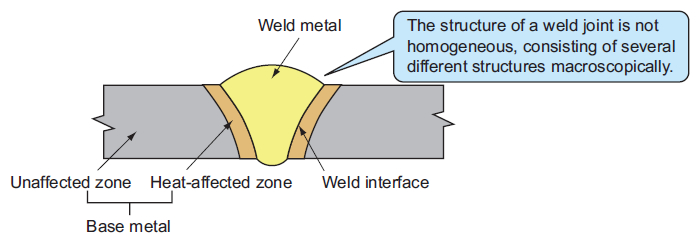
Fig. 1 Macroscopic structure of weld
(1) Weld metal
In arc welding, the weld pool has a sharp thermal gradient from the surface which is kept at a high temperature immediately under the arc to the bottom where the temperature is much lower because it touches the base metal.
Therefore, crystallization is initiated in the weld pool near the boundary with the base metal in most cases and the crystal grows towards the surface of the weld pool as the temperature goes down rapidly.
Photo 1 shows an example of this instance. It is observed that each crystal grows toward a certain direction. This kind of structure is called columnar crystal, which is a typical structure of the weld metal. Such grown columnar crystals form a coarse structure, whose impact toughness is low and mechanical properties vary according to the direction of the crystal grains.
In general, arc welding is done with multi−layers. In multi−layer welding, as shown in Fig. 2, the preceding layer is reheated by the subsequent layer, and the columnar crystal in the area that is heated up to a certain temperature changes into a finer structure. As this fine structure has good mechanical properties, it is important to make a weld joint that contains fine structures as much as possible. For this, increasing layers is effective.
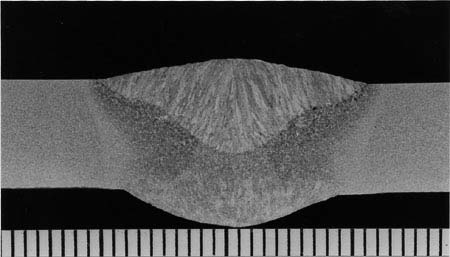
Photo 1 Macroscopic structure of weldment
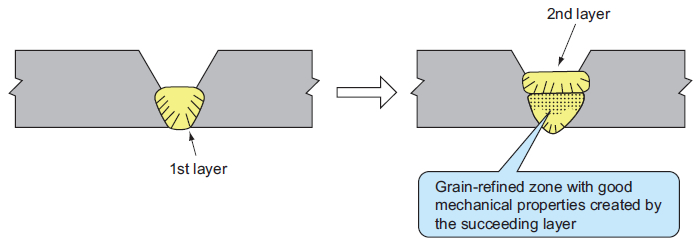
Fig. 2 Columnar crystals can be refined by multi−layer welding
(2) Heat−affected zone
The heat−affected zone (HAZ) is an area of the base metal which is affected by the welding heat so much that its properties have changed remarkably from those of the unaffected area of the base metal.
The most problematic change is that HAZ is hardened.
An instance is shown in Fig. 3.
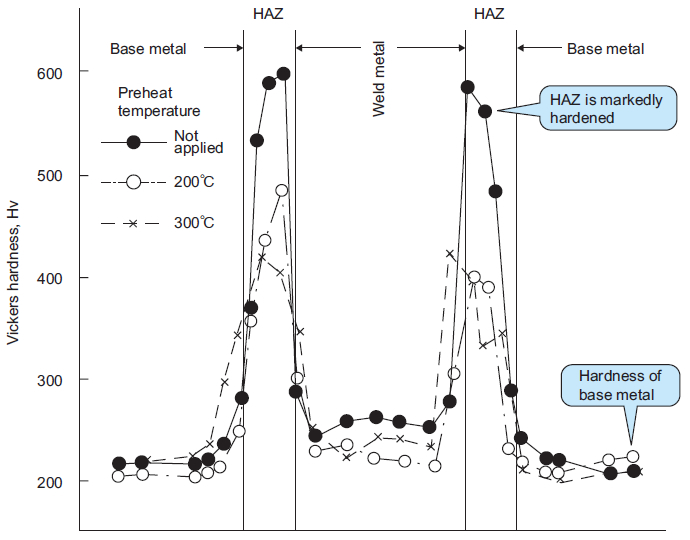
Fig. 3 Hardness distributions of 0.4C−1.5Mn−0.2Mo steel welds
HAZ that has once been heated at a high temperature by the welding heat begins to cool down rapidly after the arc passed away.
That is, the structure of HAZ becomes, by heating and rapid cooling (rapid cooling is tantamount to quenching), entirely different from that of the non−heat− affected base metal, thereby becoming hard, brittle and easy to crack.
Much caution is required especially when the cooling rate is increased by, for instance, welding a thick plate or a big weldment, or when welding is done in a cold climate.
As mentioned above, HAZ can be hardened, but the sensitivity of HAZ to hardening varies depending on the grade of steel.
That is, HAZ tends to harden as the alloying elements, especially carbon (C), increase in the steel (base metal).
Fig. 4 shows the relationship between the carbon equivalent (Ceq.) and hardness. It is evident that HAZ becomes harder and hence the risk of crack occurrence becomes higher as Ceq. is higher.
Ceq. is a value that is obtained by a formula for calculating the hardening effect of C and other elements, for which other elements are calculated with the conversion ratios predetermined in comparison with C. For instance, Mn of 0.6% is equivalent to C of 0.1% in the hardening effect.
As is evident from the formula, C has the biggest hardening effect and Si does not have much hardening effect.
Fig. 4 suggests that there is not much risk of crack occurrence with mild steel (whose Ceq. is about 0.3%) unless the plate thickness is big, but that S45C (AISI/SAE 1045,1046) steel (whose Ceq. is about 0.6%) is highly crack sensitive due to much more hardening of HAZ.
Also, we must be careful about crack occurrence in the welding of high tensile steel and low alloy steel that contain much more alloying elements.
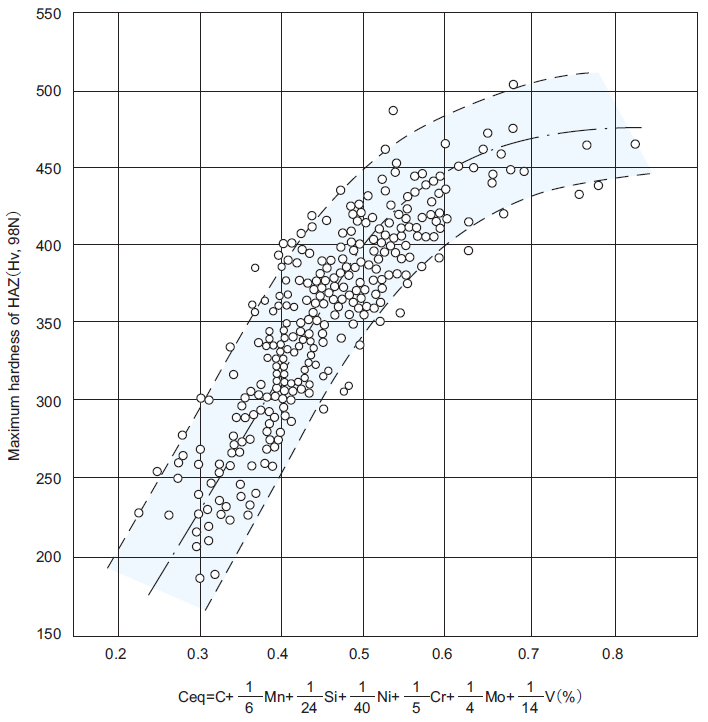
Fig. 4 Maximum hardness of HAZ as a function of the carbon equivalent (with a cooling time from 800 to 500℃: 6sec, equivalent to that in the welding condition of 170A × 24V × 150mm/min with a plate thickness of 20mm)






